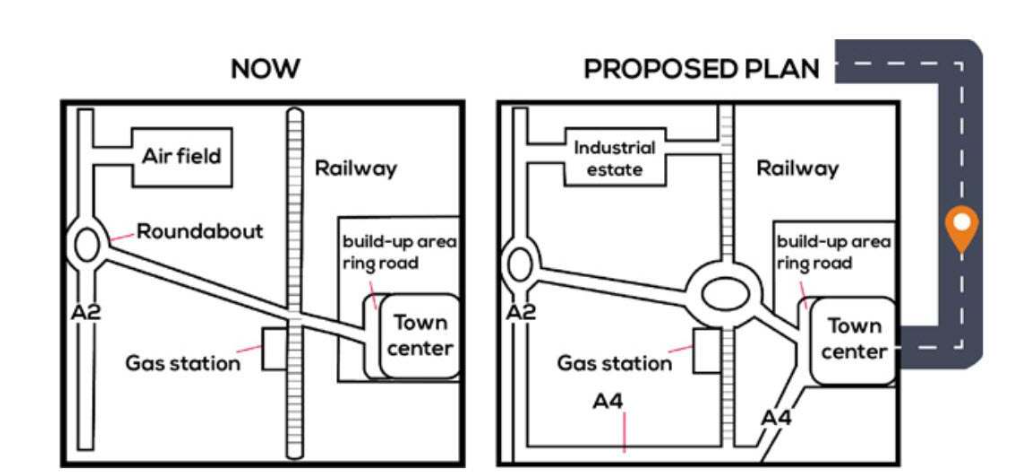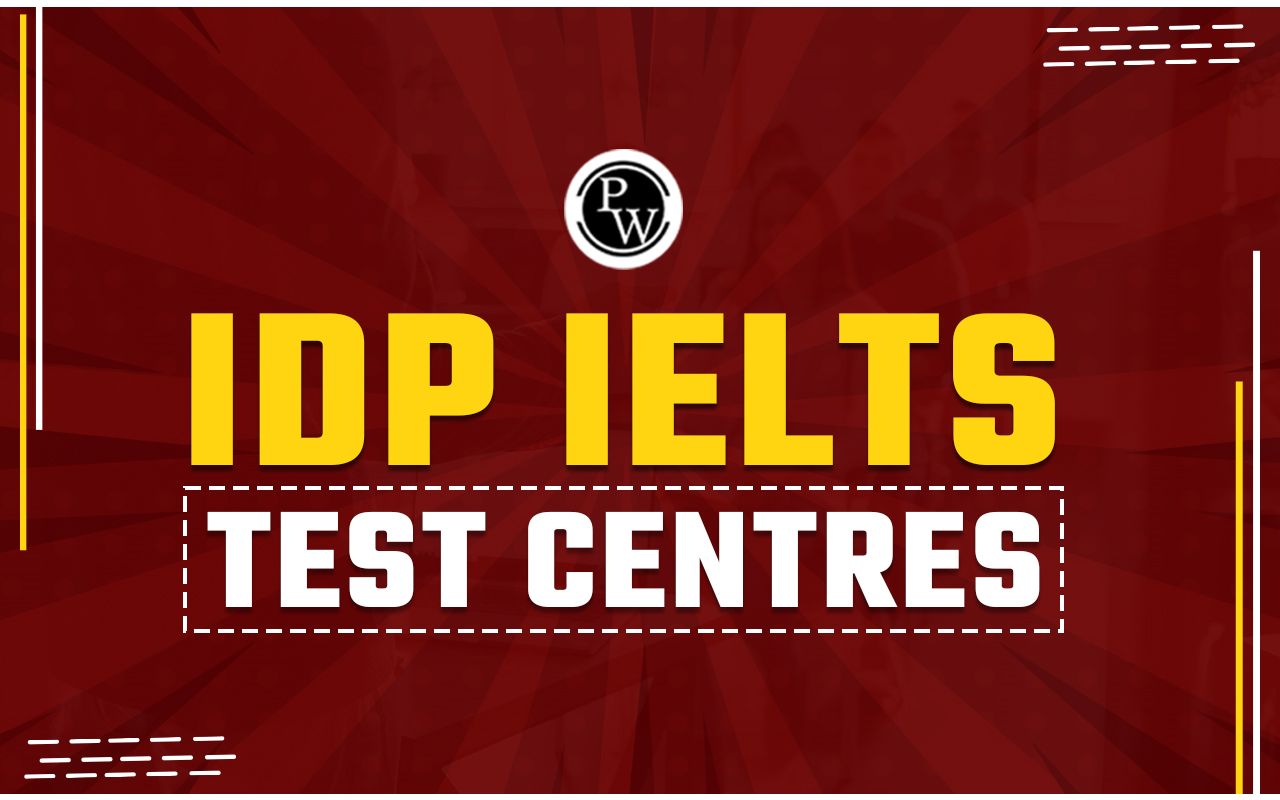
IELTS Map Model Answer: The International English Language Testing System commonly known as IELTS includes various map tasks for IELTS Writing Task 1 section. In this section, numerous map images are provided for students to evaluate their ability to describe changes to a given area over time or the layout of a particular place. Here, we have included sample map questions for test-takers to practice for IELTS Writing test. Students can also use our sample answers to frame their answers for the original IELTS exam 2025.
Understanding the IELTS Map Task
The IELTS Writing Task 1 can include a variety of formats, and the map task is one of the most visual. Candidates may be presented with two maps of the same area, showing how it has changed over time, or a single map requiring a detailed description. Understanding how to interpret these maps effectively is crucial for providing a comprehensive response.| IELTS Writing Related Links | |
|---|---|
| IELTS Writing Band Score | IELTS Writing Band Descriptors |
| IELTS Writing Test Format | IELTS Writing Task 2 |
Key Elements of an IELTS Map Task
In an IELTS map task, candidates must focus on identifying key changes and features between maps, whether they depict alterations over time or layout specifics.- Identification of Changes : Highlighting key changes between the maps.
- Descriptive Language : Using precise vocabulary to describe the maps.
- Logical Organization : Structuring your answer in a clear and coherent manner.
| Types of IELTS Writing Task 1 Questions | Cohesive Devices in IELTS Writing |
Types of IELTS Map Task
The IELTS Writing Task 1 includes variety of map tasks such as changes in town, changes in resort, places with multiple buildings and features, floor plans, and more. The maps may depict real-life locations or hypothetical scenarios. Below are the common types of maps you might encounter in the IELTS Writing Task 1.- Single Map
- Multiple Maps
- Map with Directions
- Map with Changes
Sample IELTS Map Task
Exploring sample IELTS map tasks is crucial for understanding the test format and the types of questions you may encounter. These tasks often require you to analyze and describe changes in a given area, highlighting key features, landmarks, and developments over time. By reviewing sample tasks, you can gain insights into effective strategies for structuring your responses and employing appropriate vocabulary, ultimately helping you to achieve a higher score in the IELTS writing section.Example Map Description
The two plans show the current situation and a proposed development for a town. Summarize the key features of the proposed changes.

Model Answer
The two maps illustrate the current layout of a town and a proposed plan for its future development.
Currently, the town is situated between a railway line and an airfield. A major road, A2, runs through the town, intersecting with a ring road that encircles a built-up area. The town center is located within this built-up area. A gas station is present near the intersection of A2 and the ring road, and a roundabout controls traffic at this junction.
The proposed plan involves several significant changes. Firstly, an industrial estate will be established to the west of the town. Secondly, a new bypass road will be constructed, connecting A2 to the east of the town. This bypass will divert traffic away from the town center. Finally, the roundabout will be replaced with traffic lights to improve traffic flow.
Overall, the proposed plan aims to enhance the town's infrastructure by creating an industrial area, improving traffic flow with a bypass road and traffic lights, and potentially reducing congestion and pollution in the town center.
How to Improve IELTS Writing Score
Essential Vocabulary for IELTS Map Tasks
To effectively describe maps in the IELTS exam, it is crucial to utilize a diverse range of IELTS Vocabulary . Here are some useful terms and phrases:| Vocabulary | Meaning |
|---|---|
| Erected | Constructed or built |
| Demolished | Destroyed or removed |
| Adjacent | Next to or adjoining |
| Revamped | Improved or updated |
| Relocated | Moved to a different place |
| Expanded | Made larger or more extensive |
| Transformed | Changed completely |
Descriptive Phrases
- To the north/south/east/west of : Indicating the direction of locations.
- In the center of : Describing the middle area of the map.
- Surrounded by : Indicating what encloses a particular area.
- Incorporated : Included as part of a whole.
- Facilitated : Made easier or more convenient.
Strategies for Success in IELTS Map Tasks
To excel in IELTS map tasks, it's essential to develop effective strategies that enhance your descriptive skills and overall clarity. Focusing on key features, understanding the differences between maps, and using precise vocabulary can significantly improve your performance.- Practice Regularly : Familiarize yourself with various map layouts by practicing with different sample questions.
- Analyze the Maps Carefully : Take time to understand the details before writing your answer. Note key changes and features.
- Plan Your Answer : Spend a few minutes organizing your thoughts. Structure your response into an introduction, body paragraphs, and a conclusion.
- Use Clear and Concise Language : Avoid overly complex sentences. Aim for clarity to ensure your descriptions are easily understood.
- Time Management : Allocate approximately 20 minutes to this task to ensure you can complete all components of the IELTS Writing section.
IELTS Map Task Sample Questions
To further enhance your preparation, here are a few sample IELTS map tasks you can practice with:- Map of a City Park : Describe changes to a city park over the years, including the addition of facilities like playgrounds, walking trails, and sports areas.
- Map of a Town Development : Illustrate how a small town has developed over the last decade, highlighting new residential areas, schools, and commercial spaces.
- Map of a University Campus : Describe the layout of a university campus, noting key buildings such as libraries, lecture halls, and student accommodations.
IELTS Map Task Sample Answer Structure
When writing your model answer, consider the following structure:- Introduction : Briefly introduce what the maps depict and the overall changes observed.
- Body Paragraph 1 : Discuss the significant changes in detail (e.g., new constructions, relocations).
- Body Paragraph 2 : Address other alterations (e.g., expansions, removals).
- Conclusion : Summarize the overall transformation of the area.
PW IELTS
PW IELTS offers online coaching to assist students prepare for the test in a disciplined manner. PW offers IELTS coaching for Academic and General Training. To get a band score of 8 or above on an IELTS test, students must engage in PW's IELTS coaching.IELTS Map Model Answer FAQs
Q1. What is an IELTS map task?
Q2. How is the IELTS map task scored?
Q3. What should I include in my map task response?
Q4. How can I practice for the IELTS map task?
Q5. Are there any common mistakes to avoid in the IELTS map task?










